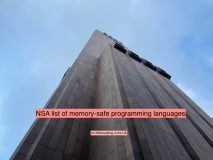The human body, consisting of 37 trillion cells, poses a complicated challenge for biologists who strive to comprehend how these cells interact to maintain life. Spatial omics, a newly emerging sector of technologies, aims to equip researchers with the necessary tools to tackle this challenge. In the last two decades, the omics revolution has enhanced our knowledge of cell and tissue biology through approaches such as bulk sequencing and single-cell omics methodologies. However, these techniques needed to separate cells from their native tissue, making examining their spatial arrangement impossible.
Spatial omics have now stepped in to fill this gap, enabling scientists to analyze individual cells and visualize their locations and interactions within a tissue. By preserving the crucial spatial context, these cutting-edge techniques pave the way for a more comprehensive understanding of cellular communication and function, thus yielding crucial insights into the intricate mechanisms governing human health and disease.
Why is spatial omics important?
Spatial omics enable the assessment of biomolecule activity directly from tissue specimens. This technology is vital for observing cell organization and biological occurrences in unparalleled detail, as numerous biological processes are governed by highly localized interactions between cells in spatially diverse tissue settings. Spatial omics technologies have evolved from prototypes to commercialized instruments accessible for general scientific application, now able to profile tens of thousands of biomolecules at both single-cell and subcellular resolutions.
Data and AI advancements raise new questions about generating extensive datasets for clinically relevant findings and how data scientists will employ AI to analyze spatial omics data. Interdisciplinary collaborations between biology, data science, and AI experts are essential to leveraging spatial omics for personalized medicine and therapeutic innovation.
Featured Image Credit: Google DeepMind; Pexels










